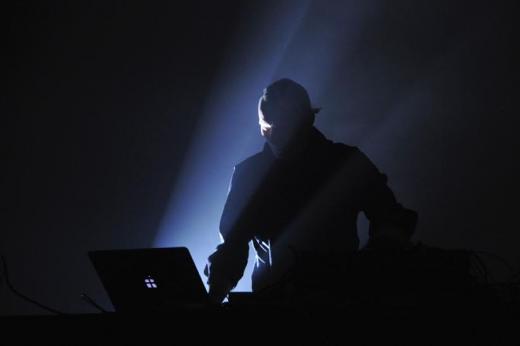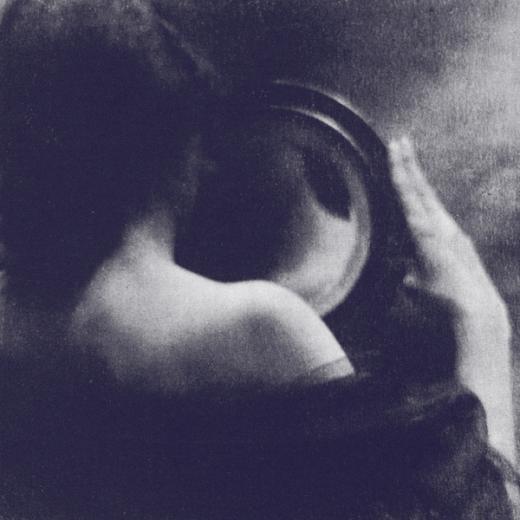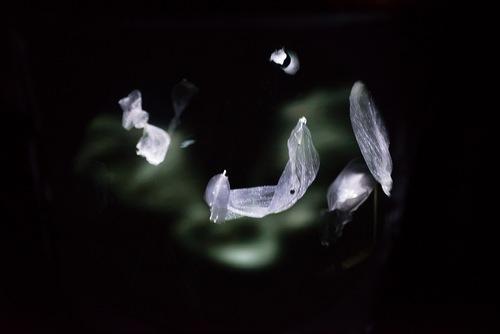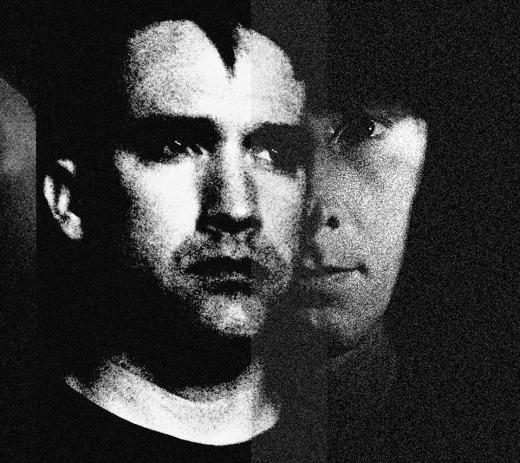Have you met... Lawrence English
Have you met... Lawrence English

Collateral tinnitus aside, this year's edition of the CTM Festival was just about as good as it gets. Loud and fun, at times extraordinary. As promised in the foreword, it highlighed the adventurous side of music and engaged with its direct bodily effects. Lawrence English delivered this idea in the perfect form, challenging minds, bodies and Berghain sound system with his "Wilderness Of Mirrors".
A potentially hazardous idea – standing next to the speaker – turned out incredibly rewarding. A synesthetic experience flushed away all the petty thoughts as the body struggled to understand this moving physical creature – this sound that skipped a few levels beyond our accustomed perception, and shifted into a strange body invader. In a highly sophisticated artistic manner, Lawrence forced us to be very present in the moment.
And while struggling to translate this psychosomatic party into words, I reached him to understand what this renaissance man is all about. Musician, media artist and curator, passionate traveler and bird watcher, among many things. He gladly spoke about his side of the Berghain experience, his latest and finest record to date, the current collaboration with Jamie Stewart for a David Lynch project, inspiration, creation, and the number one advice to the art world.
In this year's impressive CTM Festival line-up, you really stood out with your performance that encapsulated what the festival is all about, and what I personally expected from it. I even read something about vibrating plates off tables and smashing them at Berghain… Tell us your side of the CTM / Berghain experience.

Lawrence English @ CTM Festival
Well firstly, I owe a huge debt of thanks to the amazing tech and front of house staff there at Berghain. What incredible, professional and generous individuals they were. In all honesty, it is so very easy to understand why Berghain has such a good reputation, that system is quite honestly mind blowing. I have never experienced such volume and such physical sound. It is as if the system could just keep giving and giving. The top could never be found. In terms of the questions posed by CTM this year, a system like this provides a very special opportunity to explore the way sound occupies the body and the way it becomes an inescapable phenomena, both mentally and physically. Such a pleasure!
There seems to be a lot of studious thinking and personal philosophy embedded in your work. What were the conceptual threads around your latest album "Wilderness Of Mirrors" presented at CTM?

Wilderness Of Mirrors
"Wilderness Of Mirrors", in concept at least, comes from some very personal experiences I had in the years leading up to the record. I felt betrayed by the current state of politics in my country and others. This drive of hollow ideology and a sense of absolutely quantitative over qualitative policy made me incredibly frustrated. The record was a response to this attack on the social contract. It was a record born out of a deep sense of distrust and in some respects an optimistic nihilism if such a thing should be possible.
The record's more physical sound quality also comes from experiences I had during the process of making the record. Wanting to move the possibility of the sound from the internal of the mind to the flesh.
You are a composer, media artist, curator... Where else does your practice expand to? How does it evolve?
I love watching birds and generally have a fairly strong interest in zoology. In another life, if my school results had been better perhaps I would have gone down some kind of road like this. I think what allows all of this work is I am genuinely interested in the world. I think how we perceive that which is around us, and how we choose to respond to it and each other is a huge and ceaselessly fascinating space to explore. With the right level of investigation, even the most mundane and incidental can be captivating.
Can you separate your creative endeavors, or do they inevitably overlap and interfere?
I think at various times there is always going to be overlap in the interest and investigations you have. Somehow the mind just seeks for those common spaces and it is the different perspectives of practice that potentially shed a different light on the same ideas or questions. I think with all the work I do, I aspire to that great notion Appadurai espoused to think the unthinkable.
What is your visual / multimedia artwork primarily concerned with?

Night Rage <With Keith Armstrong>
(Pepper’s Ghost, projection, sound, robotics, luminous cloth)
ISEA, Powerhouse Museum, Sydney, 2013
Generally most of the works I make are concerned with perception, memory, and explore our abilities to experience. I am very curious about the possibilities for exploring the dimensions of the subjective conditions of our perception. In some respects this interest is shared I music also. I like to avoid the didactic and instead favour an approach that is more about the invitation. I like work that draws you in, allows you just enough rope to tie a knot, or to hang yourself. The risk of the message being obfuscated I think is sometimes very seductive.
Tell us about your curatorial role.
This is something that is very much project to project and context to context. I would like to think with something like Room40, there is a curatorial approach to how the works fit together. No matter how aesthetically different the works might be, I feel there is a spirit or set of interests that unites them. The depth of investigation is what ties them together, like nodes on a network.
After 15 years of taking various roles in the art world, which observation would you share first and foremost?
Possibly this.
You have collaborated with a myriad of respected artists. Could you name a few? What was special about working with them?
I have been blessed in my life to have the chance to work with a great many artists whom I have the utmost respect for. I think with each collaboration ideally comes a learning, a sense of new territories to be explored. The uncertainty of beginnings are even more thrilling that the sense of completion.
Right now I am working with my dear friend Jamie Stewart on a new project HEXA. We have been invited to create a soundtrack for David Lynch's Factory Photographs. It is such a pleasure to work with Jamie, we are both taking a very lateral approach, just letting the work unfold in its own time. I think what I enjoy more and more about collaboration is the time shared. The differing perspectives and the possibilities of more minds applied to the same interests.
Your audience knows you as an avid traveler who finds inspiration in different places. What did you like about Berlin? Did you find anything particularly distinct and inspiring here?
Berlin is still a very special city. I guess in recent years some of those unique characteristics have been lost to gentrification, but still the shadowy heart of the city persists. No matter how much people try, some parts of the city refuse to be altered. I have a huge and growing fondness for Berlin in the early 80s, perhaps like New York at that time, there was a sense of drive towards unknown and maybe even unknowable futures. Some incredible music and art came during this period of uncertainty. I hope the city can still maintain this uneasiness and restlessness long into the future.
Drop us a few names – musicians, artists, anyone who you admire and whose work we should look up, read, listen…
John Alec Baker, Werner Herzog, Dorothy Napangardi, Michael Gira.
What should we expect from you in the near future?
More restlessness. More questions. More bass.
